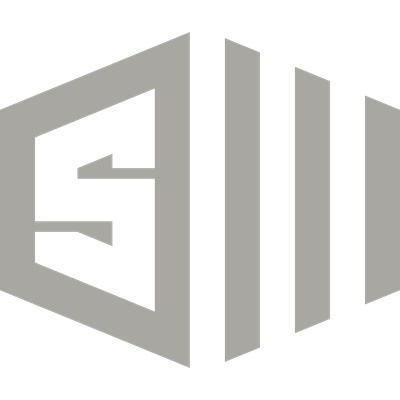
Charles Lindbergh: The Lone Eagle Page #2
- Year:
- 1999
- 71 Views
older than Lindbergh...
Benjamin Franklin Mahoney,
a former bond salesman
who bought the company
after taking a few flying lessons.
He shares Lindbergh's passion
for aviation
and his desire to win
the Transatlantic race.
Donald Hall is Ryan's only engineer.
He's also young, just twenty-seven.
Hall is astounded by Lindbergh's
vision of a solitary,
sleepless flight to Paris.
But a crew of one would mean
more room for gasoline.
He begins sketches at once for
a small aircraft, a flying fuel tank.
Lindbergh wires his sponsors
in St. Louis.
"Believe Ryan capable of building plane
with sufficient performance.
Delivery within sixty days.
Recommend closing deal.
Lindbergh."
Lindbergh has his team.
Now, it's time to get to work.
The aircraft will be an extension of
Charles Lindbergh himself.
"Every part of it can be designed
for a single purpose
every line fashioned to
the Paris flight.
I can inspect each detail before
it's covered with fabric and fairings.
I can build my own experience
into the plane's structure."
The young men who plan a leap
across the Atlantic
need to know precisely
how far it is to Paris.
Lindbergh has a primitive solution.
The bit of white grocery
string under my fingers
stretches taut along
bends down over a faded blue ocean,
and strikes the land mass of Europe.
It's 3600 statute miles.
It will be twenty-eight hours to
Ireland and thirty-six to Paris.
Lindbergh will use a simple compass to
guide him from New York to Newfoundland,
then across two thousand miles
of open sea,
with no hope of surviving
if anything goes wrong.
As Lindbergh's work gets under way,
the competition heats up.
On March 2, in New York,
Richard Byrd announces that his plan
to reach Paris is almost complete.
Byrd has built a 100,000 dollar,
gigantic aircraft named "America,"
and will be ready by May.
Just two weeks later, in Virginia,
American Navy pilots Noel Davis
and Stanton Wooster
unveil their own contender:
a tri-motor called "American Legion."
But Lindbergh holds to his plan
He is certain that
the bigger the plane,
the bigger the chance of
a fatal accident.
Then, on March 26, a new challenger
emerges in Paris.
Ace Charles Nungesser and his
one-eyed navigator Francois Coli
are ready for a westbound
crossing in their plane,
the "White Bird."
The Ryan team works around the clock,
a race against the world's
most famous aviators
all for a twenty-five year old with
a dream, and determination.
Then comes a stunning blow.
In mid-April, American pilot
Clarence Chamberlin announces that
he has stayed aloft
for a record-smashing
fifty-one hours in skies
over New York.
His powerful plane Columbia
is now ready for Paris.
waiting only for clear skies
over the Atlantic,
while Charles Lindbergh is
on the Pacific coast,
still waiting for his aircraft
to be built.
Suddenly, the odds begin to change.
A test flight of Byrd's America
on April 16 ends in a twisted wreck.
Byrd and two of his crewmen
are seriously injured
and the America needs weeks
of repairs.
Eight days later,
Clarence Chamberlin takes off
from the same New York runway.
He crash lands the Columbia.
Chamberlin walks away,
but his landing gear is destroyed.
Noel Davis and Stanton Wooster
are not as fortunate.
On April 26, both men are killed
when their overloaded plane
stalls and crashes in Virginia.
Lindbergh's prediction has come
tragically true.
Loaded down multi engine giants are
too unreliable for transatlantic flight.
Two Americans and four Frenchmen
have given their lives
in the race to link their nations.
April 28, 1927.
Two months after Charles Lindbergh
arrived in San Diego,
his dream plane is born
the Spirit of St. Louis.
Named in honor of his backers
in St. Louis,
the Spirit is just over
twenty-seven feet long,
with a forty-six foot wing span.
The plane is trucked to a local
airfield, for its maiden voyage.
For Lindbergh, Mahoney, and Hall,
The Spirit of St. Louis is all
Lindbergh dreamed it would be.
"I've never felt a plane
accelerate so fast before.
There's a huge reserve of power."
There are no front windows.
A gas tank blocks Lindbergh's
forward view.
Visibility and comfort have been
sacrificed for endurance.
Weighing just over a ton empty,
the Spirit is a tiny challenger to
Richard Byrd's eight-ton America.
The first test is a stunning success.
Every possible ounce of weight
has been eliminated.
Lindbergh will confront the Atlantic
without a radio,
without navigational instruments,
without a parachute.
He has thought through everything
and carries nothing.
He makes two dozen test flights,
and declares the Spirit ready.
The time has come to leave for
New York, and the starting line.
But he may be too late.
On May 8, French aviators Nungesser
and Coli take off from Paris.
The next day,
newspapers report the French aces
have been spotted over Nova Scotia.
So close to fulfilling his dream.
Lindbergh despairs he has lost the race.
But Nungesser and Coli
never arrive in New York.
Their aircraft mysteriously disappear.
It is never found.
Six Men have now been sacrificed.
But Lindbergh has been granted
one more chance.
May 10, 1927.
Lindbergh says goodbye to
Benjamin Franklin Mahoney,
Donald Hall,
and the Ryan factory workers.
They have built the Spirit,
it is now up to Charles Lindbergh
to fly to New York,
before any other pilot
attempts the Atlantic.
But first, he must stop in St. Louis
to meet his backers.
He flies all night, testing the Spirit,
and his own stamina.
He calculates fuel consumption
at 100 miles per hour,
his planned airspeed over the Atlantic.
And he practices holding his course
on a dead heading for St. Louis.
It is dry run, over land,
for his Atlantic journey.
Fourteen hours and twenty-five minutes
after lifting off from California,
Charles Lindbergh lands the Spirit of
St. Louis in the city of her name.
He has broken the world speed record
on his flight.
"No man has ever traveled so fast
from the Pacific coast before."
Lindbergh's sponsors want to show off
their investment,
but the great race to Paris will not
wait for a Missouri parade.
They urge him on to New York.
Seven and a half hours later,
Lindbergh reaches New York.
"Manhattan Island lies below me
millions of people,
each one surrounded by a little aura
of his problems and his thoughts,
hardly conscious of
earth's expanse beyond.
What a contrast to the western spaces
I have crossed.
I feel cooped up just looking at it"
At 4:
31 PM, on May 12, 1927,the tiny Spirit of St. Louis touches
down at Curtiss Field, Long Island.
Charles Lindbergh has crossed
the North American continent
more quickly than any man in history.
Suddenly, the race to Paris
has a new contender.
A young daredevil
Translation
Translate and read this script in other languages:
Select another language:
- - Select -
- 简体中文 (Chinese - Simplified)
- 繁體中文 (Chinese - Traditional)
- Español (Spanish)
- Esperanto (Esperanto)
- 日本語 (Japanese)
- Português (Portuguese)
- Deutsch (German)
- العربية (Arabic)
- Français (French)
- Русский (Russian)
- ಕನ್ನಡ (Kannada)
- 한국어 (Korean)
- עברית (Hebrew)
- Gaeilge (Irish)
- Українська (Ukrainian)
- اردو (Urdu)
- Magyar (Hungarian)
- मानक हिन्दी (Hindi)
- Indonesia (Indonesian)
- Italiano (Italian)
- தமிழ் (Tamil)
- Türkçe (Turkish)
- తెలుగు (Telugu)
- ภาษาไทย (Thai)
- Tiếng Việt (Vietnamese)
- Čeština (Czech)
- Polski (Polish)
- Bahasa Indonesia (Indonesian)
- Românește (Romanian)
- Nederlands (Dutch)
- Ελληνικά (Greek)
- Latinum (Latin)
- Svenska (Swedish)
- Dansk (Danish)
- Suomi (Finnish)
- فارسی (Persian)
- ייִדיש (Yiddish)
- հայերեն (Armenian)
- Norsk (Norwegian)
- English (English)
Citation
Use the citation below to add this screenplay to your bibliography:
Style:MLAChicagoAPA
"Charles Lindbergh: The Lone Eagle" Scripts.com. STANDS4 LLC, 2025. Web. 18 Jan. 2025. <https://www.scripts.com/script/charles_lindbergh:_the_lone_eagle_14507>.


Discuss this script with the community:
Report Comment
We're doing our best to make sure our content is useful, accurate and safe.
If by any chance you spot an inappropriate comment while navigating through our website please use this form to let us know, and we'll take care of it shortly.
Attachment
You need to be logged in to favorite.
Log In